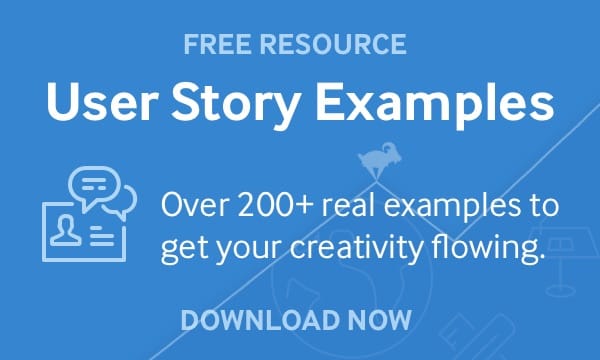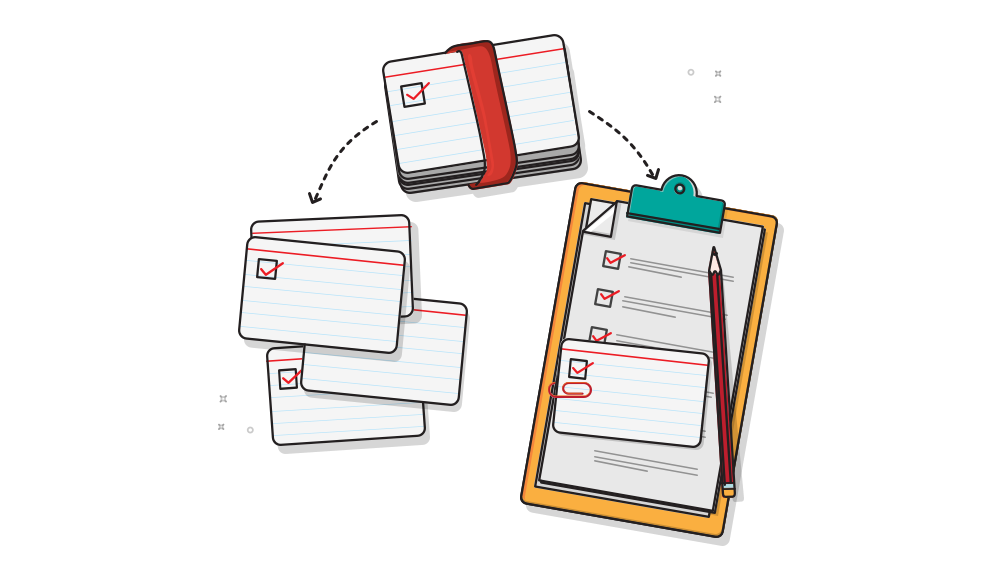· what is your approach to getting all the necessary details to write a user story?


Gratis download: 200 User Story Examples
User stories often are deliberately vague at first. If work won't begin on a story for a couple of iterations, active teams have learned there is footling value in adding detail to the story then far in advance. But the fourth dimension comes in the life of any user story when adding detail is appropriate. And there are two ways a team can add item to a user story: divide it or add credence criteria. Let's expect more closely at both methods.
Approach i: Divide the Story
The get-go arroyo to adding detail is to carve up the story into multiple sub-stories. When you create multiple, smaller stories, you'll have more detail, just equally a side result of having written more. As an example, suppose y'all would similar to allow people to log into a new product using their social media accounts. You may start by writing a story indicating nothing more than than that:
- As a user, I can log in through a social media account.
If the squad won't implement that story for a few iterations, this story is likely quite sufficient as is. However, as the fourth dimension when the team will piece of work this story approaches, additional particular is needed. Minimally, the team will want to know what social media accounts can be used for logging into the new product. That may lead to replacing the initial story with sub-stories like:
- Equally a user, I can log in through my Facebook account.
- As a user, I can log in through my LinkedIn business relationship.
- As a user, I tin can log in through my Twitter account.
By writing these sub-stories, the production owner has provided the team with the additional item of which social media accounts demand to be supported.
Arroyo 2: Add Acceptance Criteria
A second way of adding item to a story is to add notes about what the story must do in order for the product owner to accept it equally complete. For now, nosotros tin refer to these as the acceptance criteria for the story.
When working with concrete alphabetize cards, acceptance criteria are about commonly added to the back of a story carte du jour. Whatever decent software tool for managing a product backlog will accept a place for calculation the acceptance criteria, fifty-fifty if just equally notes attached to a story.
For the case of logging in through social media, nosotros would have the following story and acceptance criteria:
- As a user, I can log in through a social media business relationship.
- Acceptance criteria:
- Can log in through Facebook
- Can log in through LinkedIn
- Can log in through Twitter
- Acceptance criteria:
From these two examples, you tin can see how either creating sub-stories or adding credence criteria results in more item beingness provided.
And then, either approach tin work for adding detail as a story moves toward the top of the product backlog and the fourth dimension when it volition be worked on. Only, the two approaches do offer unique advantages, so let'southward see how you can decide which approach is best in different circumstances.
Choosing Between the Approaches
So, how do you lot cull betwixt adding item by breaking the initial story into sub-stories rather than adding acceptance criteria?
There are ii reasons to opt for creating sub-stories. The beginning is if the initial story is too large to fit easily within an iteration, especially once its acceptance criteria are added.
When a story is large, it needs to be split and then that the team can complete some subset of information technology inside an iteration. If a story needs to be split anyhow, don't carp calculation credence criteria to information technology, simply split the story.
This is likely what the team would do in our example of the log in through social media story. If supporting logging in through Facebook, LinkedIn, and Twitter made the story too big to fit easily into a single iteration, the squad would desire to dissever it along those boundaries.
Differing Priorities: A Second Reason to Write Sub-Stories
A 2nd reason to split a story into sub-stories rather than adding acceptance criteria is when the acceptance criteria would be prioritized differently past the product owner.
In the example of logging in through social media, suppose the product owner said logging in through LinkedIn was a much higher priority than logging in through Facebook or Twitter. Nosotros wouldn't desire one story so that listed all three social networks as acceptance criteria. Instead nosotros'd have one story about logging in through LinkedIn and one or 2 stories about Facebook and Twitter, depending on whether supporting each of them were of an equivalent priority.
When You lot Should Add Credence Criteria
This means that you add credence criteria when the post-obit are both true:
- Adding the acceptance criteria to the story does not arrive also big for the squad to want to bring information technology into an iteration, and
- The acceptance criteria are of about the same priority
As an example, consider this story near password force:
- As a user, I am required to enter a strong password when creating my business relationship.
The requirements for this story are probably things like requiring a password to be 8 or more characters, contain at least ane digit, one uppercase letter, ane lowercase letter, and ane symbol. Breaking each of those needs out every bit split stories would lead to overly modest stories such as:
- As a user, I am required to enter a password with at to the lowest degree 8 characters.
- As a user, I am required to enter a password with at least i digit.
- As a user, I am required to enter a password with at to the lowest degree ane uppercase letter.
- Every bit a user, I am required to enter a password with at least 1 lowercase letter.
- Equally a user, I am required to enter a countersign with at least 1 symbol.
Performing all those checks won't take a team long to code and test. And we can assume each check is virtually the aforementioned priority. That is, we don't desire to skip the requirement for a digit and come back to it in a month because it would take a long fourth dimension to implement.
Instead, requiring a strong password would be all-time equally a single story with acceptance criteria added for the specific checks:
- As a user, I am required to enter a stiff password when creating my business relationship.
- Acceptance criteria:
- Must have at least 8 characters
- Must contain at least 1 digit
- Must contain at least i uppercase letter
- Must contain at least i lowercase alphabetic character
- Must contain at least 1 symbol
- Acceptance criteria:
Yous'll Use Both of These Techniques
A adept agile team will apply both techniques to add detail to their user stories. They volition split a story when the original is large or when its sub-stories will have unlike priorities. They volition take small stories and add item in the course of acceptance criteria. Neither approach is more valuable than the other, and you want to have each in your toolkit.
A Free PDF to Aid You Choose the Approach
I've created a PDF you lot can download that volition aid yous decide which approach is best for whatsoever story you're adding detail to. It also includes examples of the two approaches. Information technology's entirely free and you lot can download it below.
What's Your Experience?
How have you and your teams added detail to user stories? Do you see examples of using each approach in your past? Delight share your thoughts and experiences in the comments department beneath.
Source: https://www.mountaingoatsoftware.com/blog/the-two-ways-to-add-detail-to-user-stories
0 Response to "· what is your approach to getting all the necessary details to write a user story?"
Post a Comment